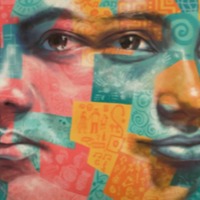
Abraham
There is an estimated 48,000 people living in modern slavery in Libya (GSI 2018). Libya is a major transit destination for migrants and refugees hoping to reach Europe by sea. Human trafficking networks have prospered amid lawlessness, created by the warring militias that have been fighting for control of territories since the toppling of Muammar Gaddafi in 2011. Highly organized trafficking and migrants smuggling networks that reach into Libya from Niger, Nigeria, Chad, Eritrea, Ethiopia, Somalia, Sudan, and other sub-Saharan states subject migrants to forced labor and forced prostitution through fraudulent recruitment, confiscation of identity and travel documents, withholding or non-payment of wages, debt bondage, and verbal, physical, and sexual abuse. In some cases, migrants reportedly pay smuggling fees to reach Tripoli, but once they cross the Libyan border they are sometimes abandoned in southern cities or the desert where they are susceptible to severe forms of abuse and human trafficking. Abraham chose to travel from Eritrea to Europe through smugglers, however he found himself trafficked by brokers and being locked inside a warehouse and held for ransom for over a year. After being released from the trafficker’s camp, he and two friends, Kidane, and Berhane, decided to cross the sea together. They were put out to sea in an old wooden boat that was leaking. They were three days at sea, with no food and no water to drink. Some of the passengers died. Today, the three friends are earnestly advising other people not to go on this dangerous journey. They say enough is enough, irregular travel through Libya should stop now.
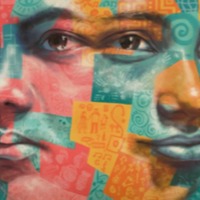
Kidane
There is an estimated 48,000 people living in modern slavery in Libya (GSI 2018). Libya is a major transit destination for migrants and refugees hoping to reach Europe by sea. Human trafficking networks have prospered amid lawlessness, created by the warring militias that have been fighting for control of territories since the toppling of Muammar Gaddafi in 2011. Highly organized trafficking and migrants smuggling networks that reach into Libya from Niger, Nigeria, Chad, Eritrea, Ethiopia, Somalia, Sudan, and other sub-Saharan states subject migrants to forced labor and forced prostitution through fraudulent recruitment, confiscation of identity and travel documents, withholding or non-payment of wages, debt bondage, and verbal, physical, and sexual abuse. In some cases, migrants reportedly pay smuggling fees to reach Tripoli, but once they cross the Libyan border they are sometimes abandoned in southern cities or the desert where they are susceptible to severe forms of abuse and human trafficking. Kidane traveled from Eritrea to Europe through smugglers, however he found himself trafficked by brokers and being locked inside a warehouse for two years. After being released from the trafficker’s camp, he and two friends, Abraham and Berhane, decided to cross the sea together. They were put out to sea in an old wooden boat that was leaking. They were three days at sea, with no food and no water to drink. Some of the passengers died. Today, the three friends are earnestly advising other people not to go on this dangerous journey. They say enough is enough, irregular travel through Libya should stop now.
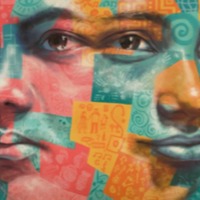
Abdirahman Hashi
There is an estimated 48,000 people living in modern slavery in Libya (GSI 2018). Libya is a major transit destination for migrants and refugees hoping to reach Europe by sea. Human trafficking networks have prospered amid lawlessness, created by the warring militias that have been fighting for control of territories since the toppling of Muammar Gaddafi in 2011. Highly organized trafficking and migrants smuggling networks that reach into Libya from Niger, Nigeria, Chad, Eritrea, Ethiopia, Somalia, Sudan, and other sub-Saharan states subject migrants to forced labor and forced prostitution through fraudulent recruitment, confiscation of identity and travel documents, withholding or non-payment of wages, debt bondage, and verbal, physical, and sexual abuse. In some cases, migrants reportedly pay smuggling fees to reach Tripoli, but once they cross the Libyan border they are sometimes abandoned in southern cities or the desert where they are susceptible to severe forms of abuse and human trafficking. Abdirahman was training to become a photographer in his hometown Hargeisa, Somalia when he started receiving pictures and messages from friends who had travelled irregularly to Europe. They were bragging about how life in Europe was wonderful and easy and Abdirahman felt an urge to go there himself. He and some friends decided to try their luck and contacted a smuggler. They had been promised the journey would be fast and easy. Already the first leg, across the sea to Yemen and from there to Sudan, brought a sharp reality check. Many fellow passengers died on the overloaded boat which had a capacity of 50 passengers but had 200 on board. On the second sea journey to Sudan the ship got lost and they ran out of food. When they finally reached the Sudanese shore, they were handed over to ruthless smugglers. They were put on buses and started a long drive through a hot desert with no food and only water mixed with petrol to drink, to prevent them feeling hungry. In Libya, their party was attacked by bandits, and they were taken to a traffickers’ camp where they were brutally beaten to force their families to pay ransom. When the ransom money had been paid, the camp was attacked by a rival gang and Abdirahman was kidnapped once again. At last, he managed to flee his tormentors and was rescued by police. He was put into detention and eventually offered repatriation, which he gratefully accepted.
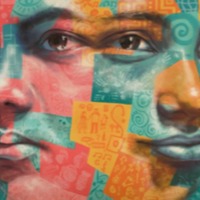
Suleiman
There is an estimated 48,000 people living in modern slavery in Libya (GSI 2018). Libya is a major transit destination for migrants and refugees hoping to reach Europe by sea. Human trafficking networks have prospered amid lawlessness, created by the warring militias that have been fighting for control of territories since the toppling of Muammar Gaddafi in 2011. Highly organized trafficking and migrants smuggling networks that reach into Libya from Niger, Nigeria, Chad, Eritrea, Ethiopia, Somalia, Sudan, and other sub-Saharan states subject migrants to forced labor and forced prostitution through fraudulent recruitment, confiscation of identity and travel documents, withholding or non-payment of wages, debt bondage, and verbal, physical, and sexual abuse. In some cases, migrants reportedly pay smuggling fees to reach Tripoli, but once they cross the Libyan border they are sometimes abandoned in southern cities or the desert where they are susceptible to severe forms of abuse and human trafficking. Suleiman travelled from Sudan to Egypt and from there was smuggled into Libya with his brother. Upon arrival they were held in a warehouse for three days before being released and going to Tobruk. Thinking they were being taken to Tripoli, they were shut inside a van with no view to the outside and arrived instead on a farm. A ransom of 15,000 Libyan dinars was demanded from each person for their release. They were stripped of their clothes, beaten, submitted to electrocutions and burnings while being weakened from hunger and thirst.
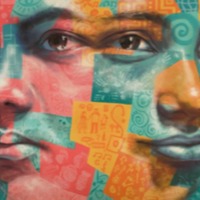
Vanessa
There is an estimated 48,000 people living in modern slavery in Libya (GSI 2018). Libya is a major transit destination for migrants and refugees hoping to reach Europe by sea. Human trafficking networks have prospered amid lawlessness, created by the warring militias that have been fighting for control of territories since the toppling of Muammar Gaddafi in 2011. Highly organized trafficking and migrants smuggling networks that reach into Libya from Niger, Nigeria, Chad, Eritrea, Ethiopia, Somalia, Sudan, and other sub-Saharan states subject migrants to forced labor and forced prostitution through fraudulent recruitment, confiscation of identity and travel documents, withholding or non-payment of wages, debt bondage, and verbal, physical, and sexual abuse. In some cases, migrants reportedly pay smuggling fees to reach Tripoli, but once they cross the Libyan border they are sometimes abandoned in southern cities or the desert where they are susceptible to severe forms of abuse and human trafficking. In Nigeria, Vanessa struggled to house and feed herself and her three children after being thrown out of their home by her abusive husband. She worked as a hawker, selling fruit, and as a hairdresser, but worried constantly about money. Then a friend mentioned a sister in Italy with a hairdressing salon and recommended Vanessa to work there. She was told it would be an easy journey through Libya, however after arriving in Tripoli, Vanessa and her fellow travellers were housed in a smuggler’s compound when a fight broke out among neighbourhood gangs. During this time, her baby developed a fever and became critically ill, dying shortly afterward. She set off from Tripoli on a smuggler’s boat headed for Italy, but the boat was captured by bandits who took them back to Libya and held the passengers for ransom. Vanessa’s friend's sister in Italy paid for her release, but she was unable to make it to Italy. When she tried for a second time, she was caught by the Libyan Coast Guard, brought back, and imprisoned. A Ghanaian man bailed her out of prison only to sell her to a brothel where she had to work as a prostitute to pay off her debt.
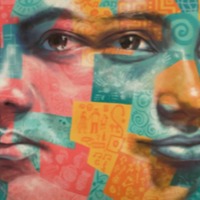
Winta
There are an estimated 518,000 people living in modern slavery in Egypt, 465,000 in Sudan and an estimated 451,000 in Eritrea (GSI 2018). Since 2006 tens of thousands of Eritreans fleeing widespread human rights abuses and destitution have ended up in Egypt’s Sinai Peninsula. Until 2010, they passed through Sinai voluntarily and generally without any problems and crossed in to Israel. However, since then, Sudanese traffickers have kidnapped Eritreans in eastern Sudan and sold them to Egyptian traffickers in Sinai who have subjected at least hundreds to violence in order to extort large sums of money from their relatives. Winta* escaped Eritrea to Sudan for the second time in 2012. However, she was kidnapped and held by smugglers, subjected to sexual abuse daily. Winta was held until her family paid a ransom to free her.
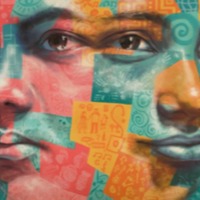
Hyiab
There are an estimated 518,000 people living in modern slavery in Egypt, 465,000 in Sudan and an estimated 451,000 in Eritrea (GSI 2018). Since 2006 tens of thousands of Eritreans fleeing widespread human rights abuses and destitution have ended up in Egypt’s Sinai Peninsula. Until 2010, they passed through Sinai voluntarily and generally without any problems and crossed in to Israel. However, since then, Sudanese traffickers have kidnapped Eritreans in eastern Sudan and sold them to Egyptian traffickers in Sinai who have subjected at least hundreds to violence in order to extort large sums of money from their relatives. Hyiab* paid to be smuggled from Eritrea to Israel, however on the way she was held captive for eleven months, tied up and beaten. She was only able to escape after paying the smuggler’s ransom.
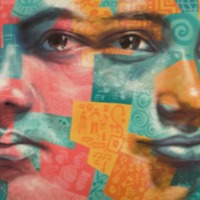
Madihah
There are an estimated 518,000 people living in modern slavery in Egypt, 465,000 in Sudan and an estimated 451,000 in Eritrea (GSI 2018). Since 2006 tens of thousands of Eritreans fleeing widespread human rights abuses and destitution have ended up in Egypt’s Sinai Peninsula. Until 2010, they passed through Sinai voluntarily and generally without any problems and crossed in to Israel. However, since then, Sudanese traffickers have kidnapped Eritreans in eastern Sudan and sold them to Egyptian traffickers in Sinai who have subjected at least hundreds to violence in order to extort large sums of money from their relatives. Madihah* defected from the Eritrean army and was kidnapped by smuggler at the Sudan border and then taken to Sinai. Madihah was subjected to physical and sexual abuse, and forced to work as a cleaner.
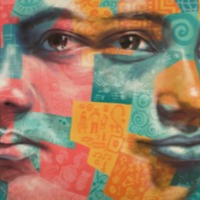
Lemlem
There are an estimated 518,000 people living in modern slavery in Egypt, 465,000 in Sudan and an estimated 451,000 in Eritrea (GSI 2018). Since 2006 tens of thousands of Eritreans fleeing widespread human rights abuses and destitution have ended up in Egypt’s Sinai Peninsula. Until 2010, they passed through Sinai voluntarily and generally without any problems and crossed in to Israel. However, since then, Sudanese traffickers have kidnapped Eritreans in eastern Sudan and sold them to Egyptian traffickers in Sinai who have subjected at least hundreds to violence in order to extort large sums of money from their relatives. Lemlem* left Eritrea after defecting from the army and planned to travel to Sudan. However, she was kidnapped on the way and transferred to Sinai. Lemlem was subjected to physical abuse and torture until she paid them a ransom to release her.
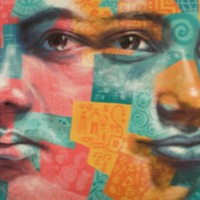
Awate
There are an estimated 518,000 people living in modern slavery in Egypt, 465,000 in Sudan and an estimated 451,000 in Eritrea (GSI 2018). Since 2006 tens of thousands of Eritreans fleeing widespread human rights abuses and destitution have ended up in Egypt’s Sinai Peninsula. Until 2010, they passed through Sinai voluntarily and generally without any problems and crossed in to Israel. However, since then, Sudanese traffickers have kidnapped Eritreans in eastern Sudan and sold them to Egyptian traffickers in Sinai who have subjected at least hundreds to violence in order to extort large sums of money from their relatives. Awate* was kidnapped on the way to Israel from Eritrea. She was kept for two weeks in Sudan and then transferred to Sinai where she was subjected to physical and sexual abuse. She was finally released after her family paid the smuggler’s ransom.
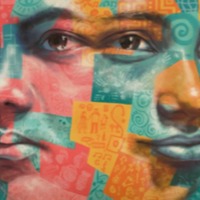
Asmarina
There are an estimated 518,000 people living in modern slavery in Egypt, 465,000 in Sudan and an estimated 451,000 in Eritrea (GSI 2018). Since 2006 tens of thousands of Eritreans fleeing widespread human rights abuses and destitution have ended up in Egypt’s Sinai Peninsula. Until 2010, they passed through Sinai voluntarily and generally without any problems and crossed in to Israel. However, since then, Sudanese traffickers have kidnapped Eritreans in eastern Sudan and sold them to Egyptian traffickers in Sinai who have subjected at least hundreds to violence in order to extort large sums of money from their relatives. Asmarina* was travelling to Israel for work when she was kidnapped by smugglers and held in Sinai for five months, subjected to physical abuse, rape and torture. Asmarina was only released once she had paid the smuggler’s ransom
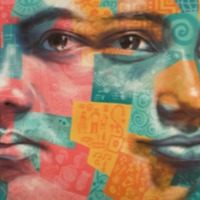
Senait
There are an estimated 518,000 people living in modern slavery in Egypt, 465,000 in Sudan and an estimated 451,000 in Eritrea (GSI 2018). Since 2006 tens of thousands of Eritreans fleeing widespread human rights abuses and destitution have ended up in Egypt’s Sinai Peninsula. Until 2010, they passed through Sinai voluntarily and generally without any problems and crossed in to Israel. However, since then, Sudanese traffickers have kidnapped Eritreans in eastern Sudan and sold them to Egyptian traffickers in Sinai who have subjected at least hundreds to violence in order to extort large sums of money from their relatives. Senait* was kidnapped in Sudan after leaving Eritrea. She was held for three days in Sudan and then transferred to Sinai where she spent six months chained, beaten and raped. Senait was only released after paying the smuggler’s ransom.
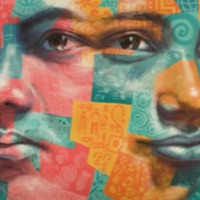
Negassi
There are an estimated 518,000 people living in modern slavery in Egypt, 465,000 in Sudan and an estimated 451,000 in Eritrea (GSI 2018). Since 2006 tens of thousands of Eritreans fleeing widespread human rights abuses and destitution have ended up in Egypt’s Sinai Peninsula. Until 2010, they passed through Sinai voluntarily and generally without any problems and crossed in to Israel. However, since then, Sudanese traffickers have kidnapped Eritreans in eastern Sudan and sold them to Egyptian traffickers in Sinai who have subjected at least hundreds to violence in order to extort large sums of money from their relatives. Negassi* was fleeing Eritrea when he was kidnapped by Smugglers in Sudan and transferred to Sinai. He was subjected to physical abuse and torture for a year until he paid their ransom.
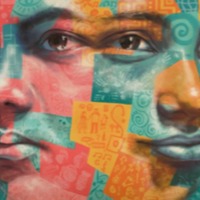
Ali B.
There are an estimated 518,000 people living in modern slavery in Egypt, 465,000 in Sudan and an estimated 451,000 in Eritrea (GSI 2018). Since 2006 tens of thousands of Eritreans fleeing widespread human rights abuses and destitution have ended up in Egypt’s Sinai Peninsula. Until 2010, they passed through Sinai voluntarily and generally without any problems and crossed in to Israel. However, since then, Sudanese traffickers have kidnapped Eritreans in eastern Sudan and sold them to Egyptian traffickers in Sinai who have subjected at least hundreds to violence in order to extort large sums of money from their relatives. Ali* escaped from Eritrea in November 2011. However, one hour after he reached Kassala police stopped him and took him to a police station, took all his money, and put him in a cell. He recalls how the police then handed him over to traffickers.
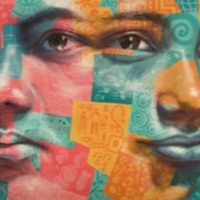
Selassie
There are an estimated 518,000 people living in modern slavery in Egypt, 465,000 in Sudan and an estimated 451,000 in Eritrea (GSI 2018). Since 2006 tens of thousands of Eritreans fleeing widespread human rights abuses and destitution have ended up in Egypt’s Sinai Peninsula. Until 2010, they passed through Sinai voluntarily and generally without any problems and crossed in to Israel. However, since then, Sudanese traffickers have kidnapped Eritreans in eastern Sudan and sold them to Egyptian traffickers in Sinai who have subjected at least hundreds to violence in order to extort large sums of money from their relatives. Selassie* escaped from his kidnappers at the end of December 2011 but recalls how a second group of “Rashaida” kidnapped and then tortured him and other Eritrean kidnap victims.
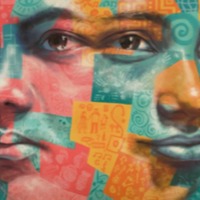
Kidane B
There are an estimated 518,000 people living in modern slavery in Egypt, 465,000 in Sudan and an estimated 451,000 in Eritrea (GSI 2018). Since 2006 tens of thousands of Eritreans fleeing widespread human rights abuses and destitution have ended up in Egypt’s Sinai Peninsula. Until 2010, they passed through Sinai voluntarily and generally without any problems and crossed in to Israel. However, since then, Sudanese traffickers have kidnapped Eritreans in eastern Sudan and sold them to Egyptian traffickers in Sinai who have subjected at least hundreds to violence in order to extort large sums of money from their relatives. Kidane* fled Eritrea on April 3, 2012, when local Sudanese people from the Hadarib tribe stopped him and handed him over to “Rashaida.” After which he was held for two weeks under ransom.
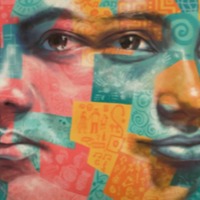
Jemal
There are an estimated 518,000 people living in modern slavery in Egypt, 465,000 in Sudan and an estimated 451,000 in Eritrea (GSI 2018). Since 2006 tens of thousands of Eritreans fleeing widespread human rights abuses and destitution have ended up in Egypt’s Sinai Peninsula. Until 2010, they passed through Sinai voluntarily and generally without any problems and crossed in to Israel. However, since then, Sudanese traffickers have kidnapped Eritreans in eastern Sudan and sold them to Egyptian traffickers in Sinai who have subjected at least hundreds to violence in order to extort large sums of money from their relatives. Jemal* fled Eritrea and crossed at night to Sudan near Hafira in September 2011. There he met a farmer who let him stay the night and said he knew people who could help him go to the Kassala refugee camps. He was then taken by five men with guns, tied, beaten and held for ransom for two months.
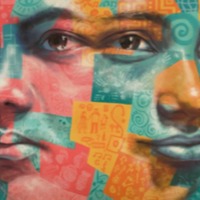
Yonas
There are an estimated 518,000 people living in modern slavery in Egypt, 465,000 in Sudan and an estimated 451,000 in Eritrea (GSI 2018). Since 2006 tens of thousands of Eritreans fleeing widespread human rights abuses and destitution have ended up in Egypt’s Sinai Peninsula. Until 2010, they passed through Sinai voluntarily and generally without any problems and crossed in to Israel. However, since then, Sudanese traffickers have kidnapped Eritreans in eastern Sudan and sold them to Egyptian traffickers in Sinai who have subjected at least hundreds to violence in order to extort large sums of money from their relatives. Yonas* was kidnapped by traffickers traffickers near Sudan’s Shagarab refugee camp in March 2012. These traffickers handed him over to Egyptian traffickers in southern Egypt, who held him in Sinai with 24 other men and eight women for six weeks.